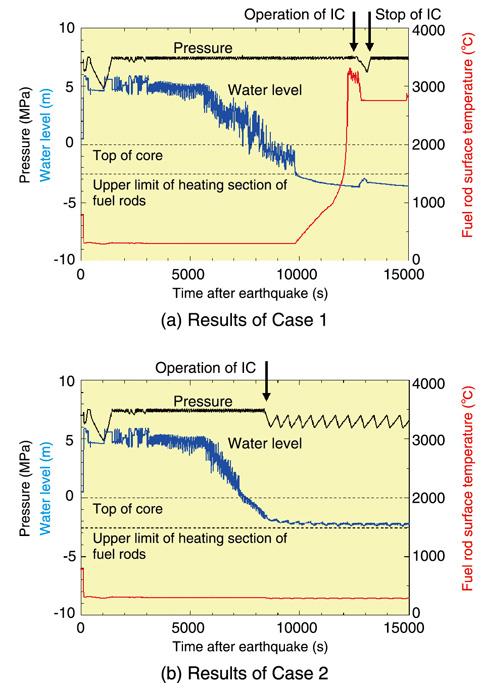

NARRATOR:This is the frantically scribbled log the engineers kept on a whiteboard in the control room as the nuclear plant slid towards disaster. TAKASHI SATO: When I heard the diesel generators were lost, I couldn't square that with reality. They were destroyed by the tsunami waters, meaning the workers had no way of keeping the nuclear fuel from melting. NARRATOR:Most of the backup diesel generators needed to power the cooling systems were located in basements. Buildings and 5,000-ton fuel tanks were sucked out to sea. "MURAKAMI": Cars had been left everywhere by the wave. NARRATOR:This man is a senior nuclear engineer who still works at the plant. I felt something incredible had happened. Now the tsunami flooded the nuclear plant.

The company says it was still reviewing the matter when the disaster happened. It's now known that TEPCO had been warned by a government committee of scientists in 2009 that its tsunami defenses were inadequate. It was more than twice the height of the plant's seawall. NARRATOR:At 3:35 PM, the biggest of the waves struck. NARRATOR:At the nuclear plant, a worker was filming as his co-workers fled to higher ground.įLEEING WORKER: Hurry up! It's coming!įLEEING WORKER: The tsunami is going to catch you! YOSHIO ICHIDA: When I looked back to shore, there was a strange ocean mist. NARRATOR:The biggest of the waves was more than 40 feet high and traveling at over 100 miles an hour. We went over three waves that came directly from the east. He was racing straight into the biggest tsunami waves to strike Japan in hundreds of years, hoping to crest them before they broke. NARRATOR:Yoshio Ichida wanted to save his boat. I went straight to the harbor and headed out to sea. YOSHIO ICHIDA: It's always been said on this shore the tsunami will follow the earthquake. NARRATOR:Just up the coast, the fishermen of Fukushima knew what was coming next. But in the end, the plant wasn't safe, was it. I had always thought nuclear power was safe. TAKASHI SATO: I wasn't worried about the condition of the plant. Takashi Sato is a reactor inspector who no longer works at the plant. So backup generators kicked in to power the cooling systems and stop the fuel rods from melting. But the high radioactivity of nuclear fuel rods means they generate intense heat even after a shutdown. The reactors automatically shut down within seconds. NARRATOR:The workers stayed calm because they knew Japanese power plants are designed to withstand earthquakes. "MURAKAMI": We were all on our knees, holding onto the railings. TAKASHI SATO: It was getting stronger and stronger. "ONO": I saw all the pipes fixed to the wall shifting and ripping off. Some have asked for their identities to be hidden for fear of being fired. The company that operates the plant, TEPCO, has forbidden its workers from speaking publicly about what followed.īut one year on, they are starting to tell their stories. NARRATOR:The earthquake that shook the Fukushima Dai-ichi nuclear power plant was the most powerful to strike Japan since records began. It was like nothing I'd ever experienced. Then, I think it was about 2:46 PM, I felt an incredible rumbling in the earth. Before that day, we'd had a few earthquakes, around magnitude 4. TAKASHI SATO, Former Plant Inspector: On March 11th, there was a relaxed atmosphere at work.


 0 kommentar(er)
0 kommentar(er)
